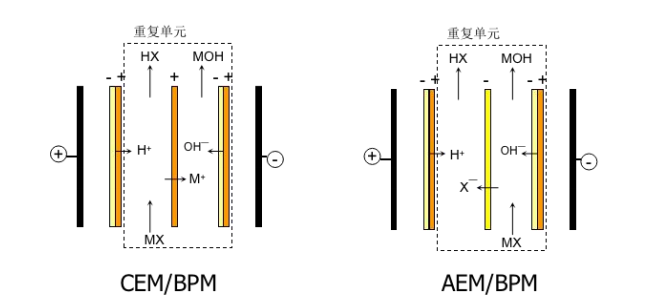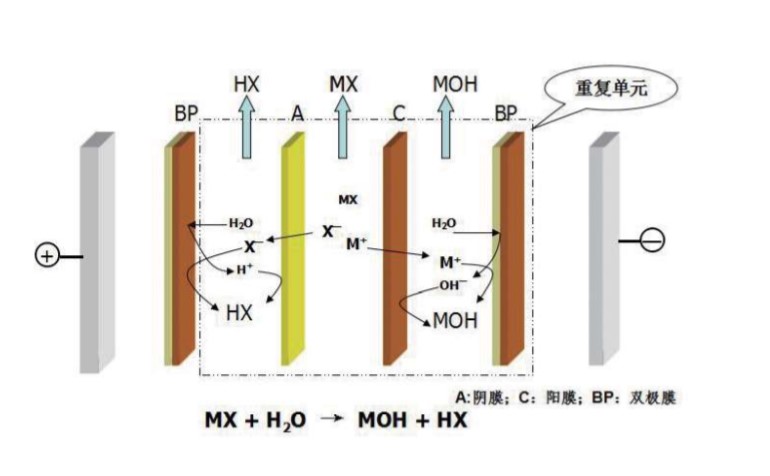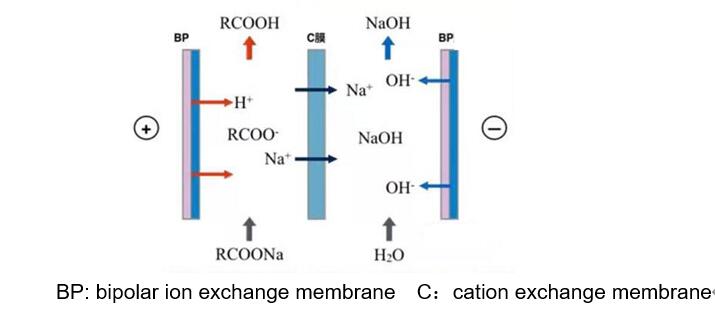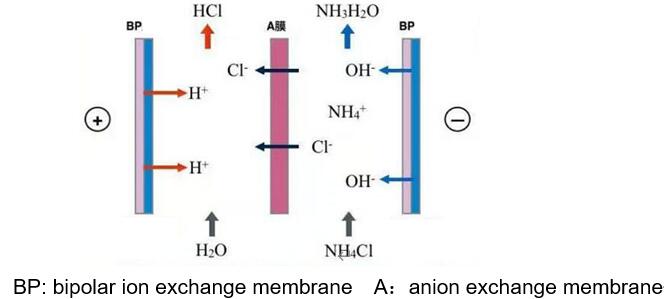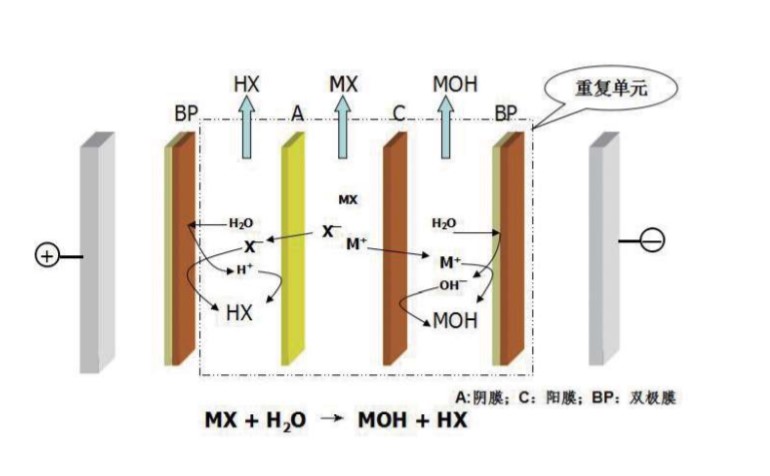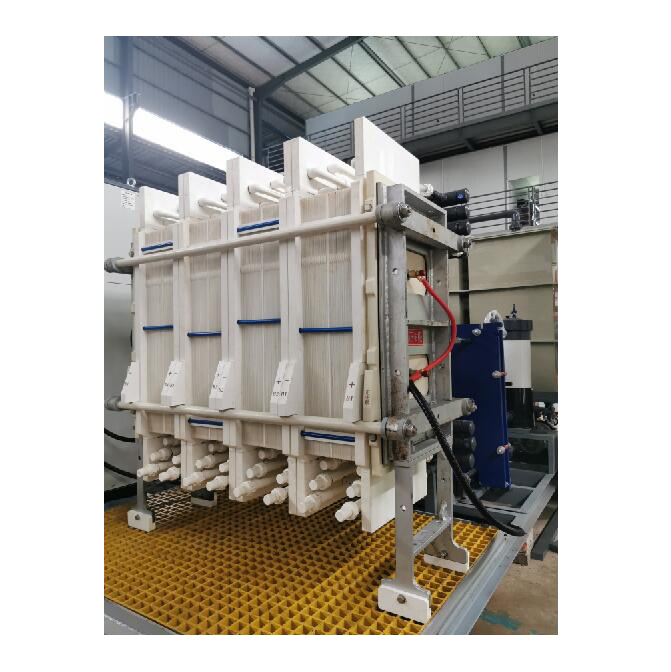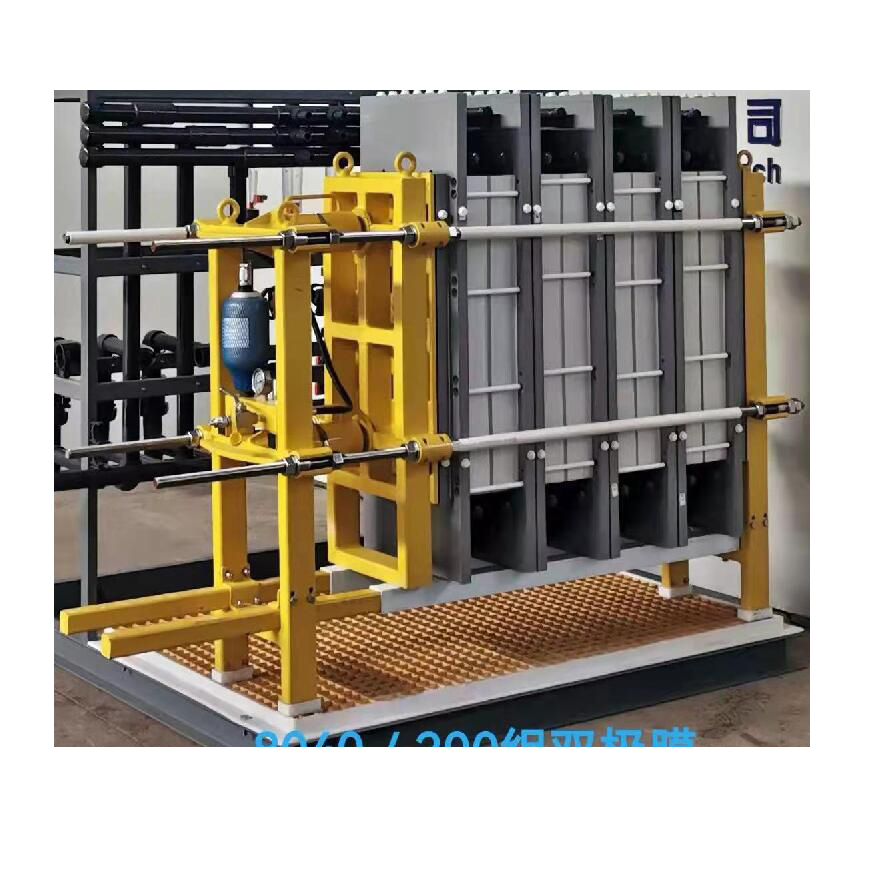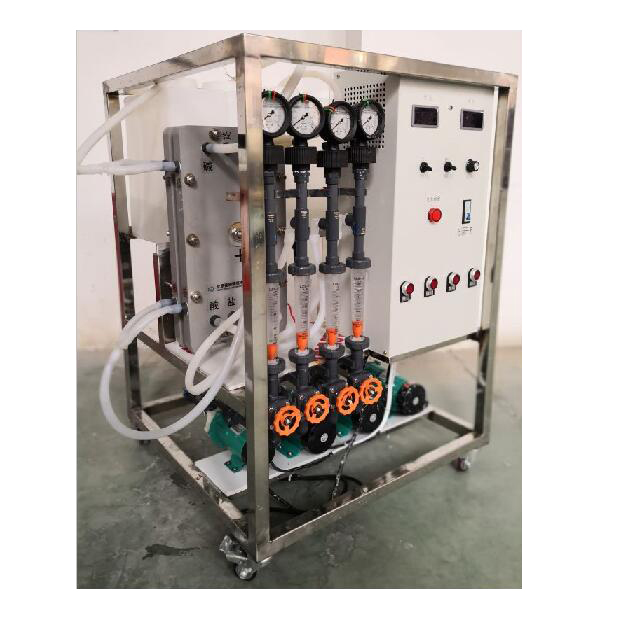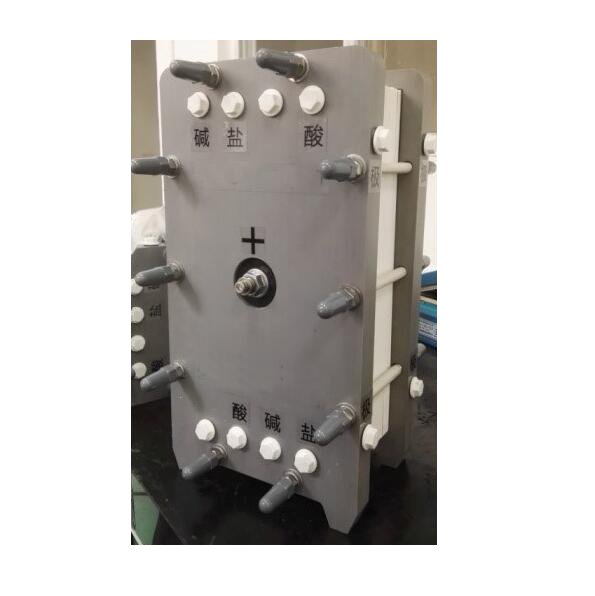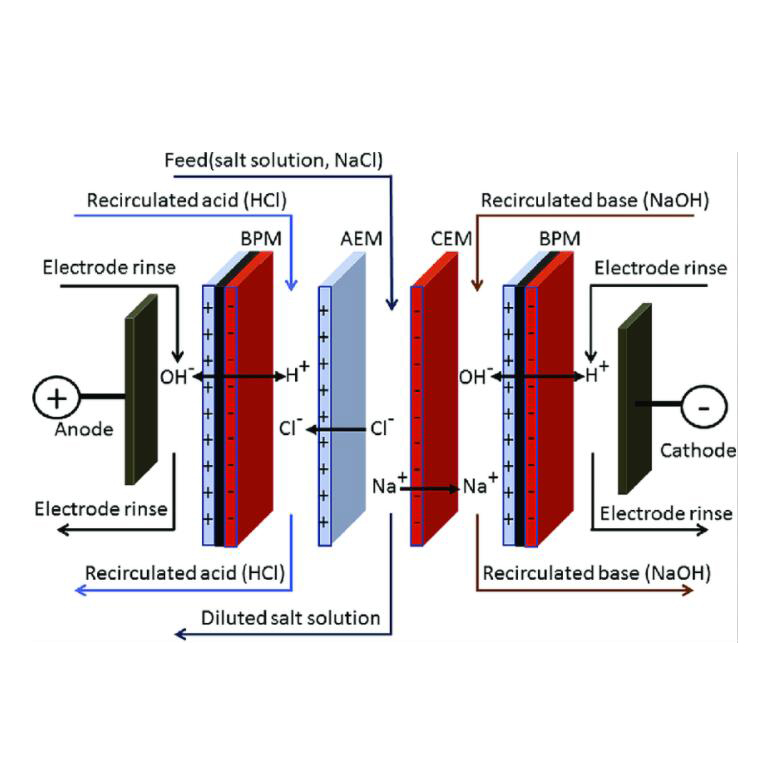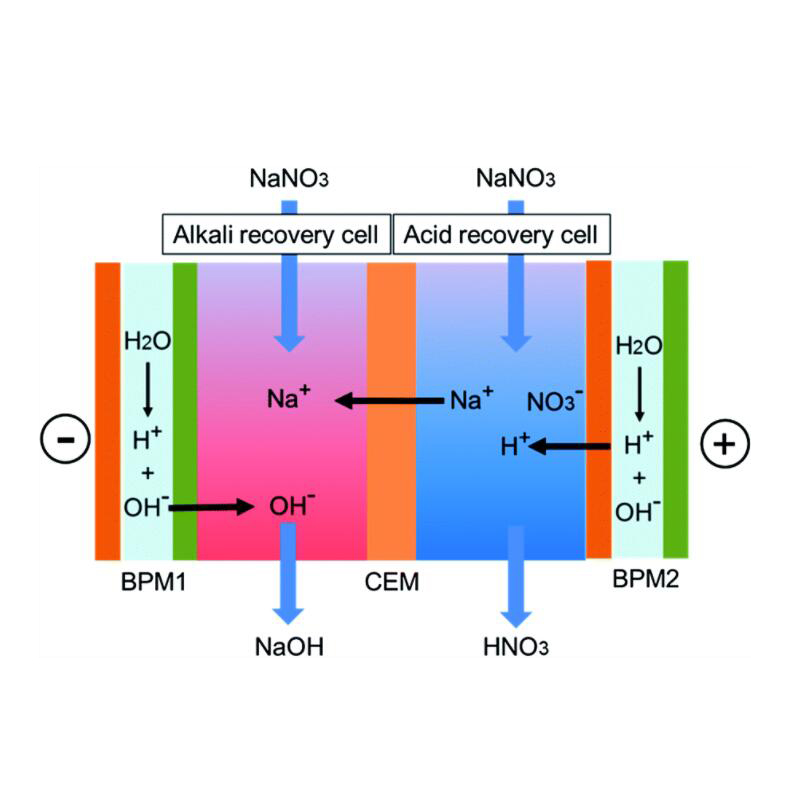Chemical Name:Small Type Bipolar Membrane Electrodialyser 4020 for lab
Synonyms:Bipolar Membrane Electrodialyser,Bipolar Membrane Electrodialyzer,Bipolar Ion Exchange Membrane Electrodialyser,Bipolar Membrane Electrodialysis Stack,Bipolar Ion Exchange Membrane Electrodialysis Stack
Application:Preparation of acid and bases from salts
Min. Order:1 piece
Payment Terms:L/C,T/T,Western Union,Paypal
Lead Time:30-60 days
Month Capacity:300 pieces
Principle of bipolar membrane electrodialysis two chambers:
1,Principles of preparing acid and alkali from strong base and weak acid salt-ACM
This principle is mainly used for the preparation of organic acids such as gluconic acid, malic acid, vC, propanesulfonic acid, oxalic acid, citric acid, tartaric acid, EDTA, lactic acid, methionine, morpholine ethanesulfonic acid, etc. The bipolar membrane process has no waste water discharge and by-product hydroxide Sodium can be recycled for the fermentation process.
2,The principle of acid and alkali preparation from strong acid and weak base salt-ABM
This principle is mainly used in the preparation of organic bases such as triethylamine hydrochloride, triethylamine tetramethylammonium salt, ornithine tetrapropyl bromide, quaternary amine base, tetraethylammonium hydroxide, methyldiethanolamine, etc. When hydroxide is introduced, cations are not added, and anions are separated.
Principle of bipolar membrane electrodialysis three chambers:
Small Bipolar Membrane Electrodialyser List:
Item |
Equipment |
Type |
Quantity |
Unit |
1 |
Bipolar Membrane Stack |
|
1 |
set |
2 |
Rack |
|
1 |
set |
3 |
Flowmeter |
|
4 |
pcs |
4 |
Flow Sensors |
|
1 |
pcs |
5 |
pressure gage |
0-0.2MPa |
4 |
pcs |
6 |
magnetic drive pump |
MP-30RZM |
3 |
pcs |
7 |
magnetic drive pump |
MP-20RZM |
1 |
pcs |
8 |
Water Tank |
|
4 |
pcs |
9 |
Conductivity meter |
|
1 |
set |
10 |
PH meter |
|
1 |
set |
11 |
Rectifier |
|
1 |
pcs |
Under standard operating conditions, the conversion efficiency of the membrane stack is as follows(Other salts can be calculated according to the corresponding equivalent molar mass):
Name |
Reaction Formula |
Processing Capacity(kg/h) |
NaCl |
H2O+NaCl--HCl+NaOH |
30 |
Na2SO4 |
Na2SO4+H2O--H2SO4+NaOH |
36.4 |
LiCl |
LiCl+H2O--LiOH+HCl |
21.8 |
Li2SO4 |
Li2SO4+H2O--H2SO4+LiOH |
28.2 |
NaNO3 |
NaNO3+H2O--HNO3+NaOH |
43.6 |
Usually the acid-base equivalent concentration is 1N, and the acid-base concentration can be further increased by changing the operating conditions.
Applications Areas:
1, Preparation of acid and bases from inorganic salts (such as sodium sulfate, sodium chloride, lithium chloride, etc.)
2, Production of organic acids (such as gluconic acid, lactic acid, malic acid, succinic acid, etc.)
3, Production of organic bases (such as ornithine, lysine, arginine, histidine, etc.)
Applications Cases:
1,Treatment and recycling of saline wastewater
2,Direct production of hydrochloric acid and sodium hydroxide from table salt (sodium chloride) Direct production of vitamin C from sodium salt of vitamin C
3,Direct production of tartaric acid from sodium tartrate
4,Direct production of lactic acid from sodium lactate
5,Direct production of gluconic acid from sodium gluconate
6,Direct production of methanesulfonic acid from sodium methanesulfonate
7,Direct separation of amino acids from fermentation broth
8,Recovery of acetic acid from sodium acetate waste water

